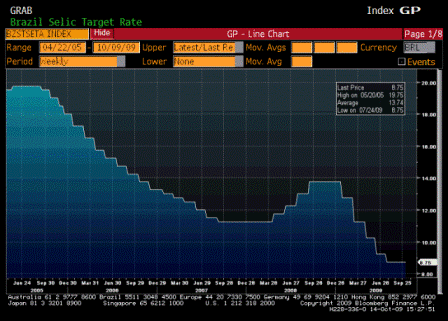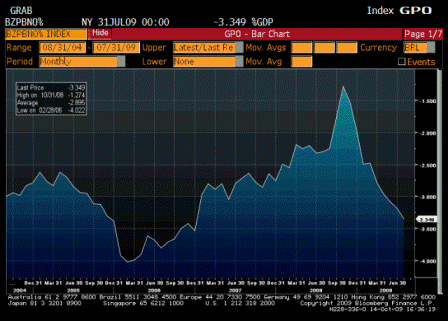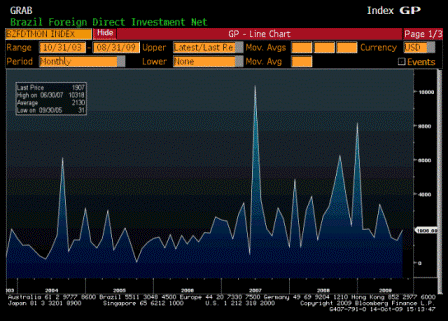[Skip to the end]
“Worldly wisdom teaches that it is better for reputation to fail conventionally than to succeed unconventionally.”
Keynes, Chapter 12, The General Theory of Employment, Interest, and Money
The Fed has failed, but failed conventionally, and is therefore being praised for what it has done.
The Fed has a stated goal of “maximum employment, stable prices, and moderate long term interest rates” (Both the Federal Act 1913 and as amended in 1977).
It has not sustained full employment. And up until the recent collapse of aggregate demand, the Fed assumed it had the tools to sustain the demand necessary for full employment. In fact, longer term Federal Reserve economic forecasts have always assumed unemployment would be low and inflation low two years in the future, as those forecasts also assumed ‘appropriate monetary policy’ would be applied.
The Fed has applied all the conventional tools, including aggressive interest rate cuts, aggressive lending to its member banks, and extended aggressive lending to other financial markets. Only after these actions failed to show the desired recovery in aggregate demand did the Fed continue with ‘uncoventional’ but well known monetary policies. These included expanding the securities member banks could use for collateral, expanding its portfolio by purchasing securities in the marketplace, and lending unsecured to foreign central banks through its swap arrangements.
While these measures, and a few others, largely restored ‘market functioning’ early in 2009, unemployment has continued to increase, while inflation continues to press on the low end of the Fed’s tolerance range. Indeed, with rates at 0% and their portfolio seemingly too large for comfort, they consider the risks of deflation much more severe than the risks of an inflation that they have to date been unable to achieve.
The Fed has been applauded for staving off what might have been a depression by taking these aggressive conventional actions, and for their further aggressiveness in then going beyond that to do everything they could to reverse a dangerously widening output gap.
The alternative was to succeed unconventionally with the proposals I have been putting forth for well over a year. These include:
1. The Fed should have always been lending to its member banks in the fed funds market (unsecured interbank lending) in unlimited quantities at its target fed funds rate. This is unconventional in the US, but not in many other nations that have ‘collars’ where the Central Bank simply announces a rate at which it will borrow, and a slightly higher rate at which it will lend.
Instead of lending unsecured, the Fed demands collateral from its member banks. When the interbank markets ceased to function, the Fed only gradually began to expand the collateral it would accept from its banks. Eventually the list of collateral expanded sufficiently so that Fed lending was, functionally, roughly similar to where it would have been if it were lending unsecured, and market functioning returned.
What the Fed and the administration failed to appreciate was that demanding collateral from loans to member banks was redundant. The FDIC was already examining banks continuously to make sure all of their assets were deemed ‘legal’ and ‘appropriate’ and properly risk weighted and well capitalized. It is also obligated to take over any bank not in compliance. The FDIC must do this because it insures the bank deposits that potentially fund the entire banking system. Lending to member banks by the Fed in no way changes the asset structure of the banks, and so in no way increases the risk to government as a whole. If anything, unsecured lending by the Fed alleviates risk, as unsecured Fed lending eliminates the possibility of a liquidity crisis.
2. The Fed has assumed and continued to assume lower interest rates add to aggregate demand. There are, however, reasons to believe this is currently not the case.
First, in a 2004 Fed paper by Bernanke, Sacks, and Reinhart, the authors state that lower interest rates reduce income to the non government sectors through what they call the ‘fiscal channel.’ As the Fed cuts rates, the Treasury pays less interest, thereby reducing the income and savings of financial assets of the non government sectors. They add that a tax cut or Federal spending increase can offset this effect. Yet it was never spelled out to Congress that a fiscal adjustment was potentially in order to offset this loss of aggregate demand from interest rate cuts.
Second, while lowering the fed funds rate immediately cut interest rates for savers, it was also clear rates for borrowers were coming down far less, if at all. And, in many cases, borrowing rates rose due to credit issues. This resulted in expanded net interest margins for banks, which are now approaching an unheard of 5%. Funds taken away from savers due to lower interest rates reduces aggregate demand, borrowers aren’t gaining and may be losing as well, and the additional interest earned by lenders is going to restore lost capital and is not contributing to aggregate demand. So this shift of income from savers to banks (leveraged lenders) is reducing aggregate demand as it reduces personal income and shifts those funds to banks who don’t spend any of it.
3. The Fed is perpetuating the myth that its monetary policy will work with a lag to support aggregate demand, when it has no specific channels it can point to, or any empirical evidence that this is the case. This is particularly true of what’s called ‘quantitative easing.’ Recent surveys show market participants and politicians believe the Fed is engaged in ‘money printing,’ and they expect the size of the Fed’s portfolio and the resulting excess reserve positions of the banks to somehow, with an unknown lag, translate into a dramatic ‘monetary expansion’ and inflation. Therefore, during this severe recession where unemployment has continued to be far higher than desired, market participants and politicians are focused instead on what the Fed’s ‘exit strategy’ might be. The the fear of that presumed event has clearly taken precedence over the current economic and social disaster. A second ‘fiscal stimulus’ is not even a consideration, unless the economy gets substantially worse. Published papers from the NY Fed, however, clearly show how ‘quantitative easing’ should not be expected to have any effect on inflation. The reports state that in no case is the banking system reserve constrained when lending, so the quantity of reserves has no effect on lending or the economy.
4. The Fed is perpetuating the myth that the Federal Government has ‘run out of money,’ to use the words of President Obama. In May, testifying before Congress, when asked where the money the Fed gives the banks comes from, Chairman Bernanke gave the correct answer- the banks have accounts at the Fed much like the rest of us have bank accounts, and the Fed gives them money simply by changing numbers in their bank accounts. What the Chairman explained was there is no such thing as the government ‘running out of money.’ But the government’s personal banker, the Federal Reserve, as decided not publicly correct the misunderstanding that the government is running out of money, and thereby reduced the likelihood of a fiscal response to end the current recession.
There are also additional measures the Fed should immediately enact, such banning member banks from using LIBOR in any of their contracts. LIBOR is controlled by a foreign entity and it is counter productive to allow that to continue. In fact, it was the use of LIBOR that prompted the Fed to advance the unlimited dollar swap lines to the world’s foreign central banks- a highly risky and questionable maneuver- and there is no reason US banks can’t index their rates to the fed funds rate which is under Fed control.
There is also no reason I can determine, when the criteria is public purpose, to let banks transact in any secondary markets. As a point of logic, all legal bank assets can be held in portfolio to maturity in the normal course of business, and all funding, both short term and long term can be obtained through insured deposits, supplemented by loans from the Fed on an as needed basis. This would greatly simply the banking model, and go a long way to ease regulatory burdens. Excessive regulatory needs are a major reason for regulatory failures. Banking can be easily restructured in many ways for more compliance with less regulation.
There are more, but I believe the point has been made. I conclude by giving the Fed and Chairman Bernanke a grade of A for quickly and aggressively applying conventional actions such as interest rate cuts, numerous programs for accepting additional collateral, enacting swap lines to offset the negative effects of LIBOR dependent domestic interest rates, and creative support of secondary markets. I give them a C- for failure to educate the markets, politicians, and the media on monetary operations. And I give them an F for failure to recognize the currently unconventional actions they could have taken to avoid the liquidity crisis, and for failure inform Congress as to the necessity of sustaining aggregate demand through fiscal adjustments.
[top]




